Get PeakVisor App
Sign In
Search by GPS coordinates
- Latitude
- ° ' ''
- Longitude
- ° ' ''
- Units of Length

Yes
Cancel
Share ×

Scan the QR code and open PeakVisor on your phone
❤ Wishlist ×
Choose
Delete
Whitewashed beaches, azure blue oceans, low lying mountains, and overgrown forests adorn the area of Kenting National Park (墾丁國家公園), the only tropical national park in Taiwan. A total of 35 named mountains occupy the land in Kenting National Park, the tallest and most prominent of which is Wanlideshan (萬里得山) standing at 527 metres (1,729 ft).
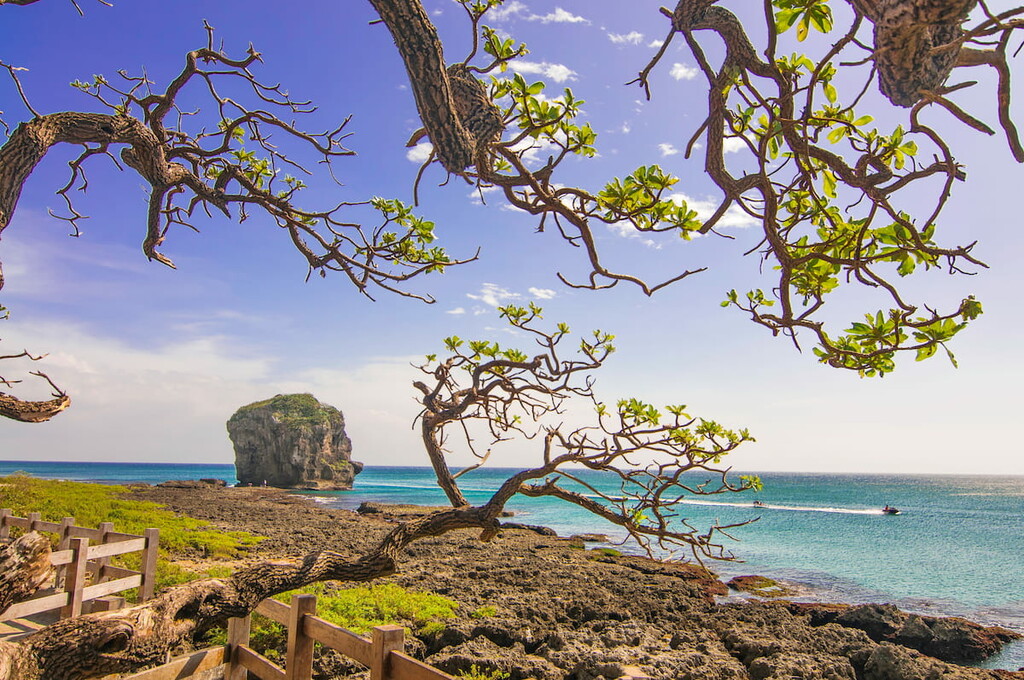
Kenting National Park is situated on the far southern part of the Hengchun Peninsula in Pingtung County (屏东县), the southernmost region of the island of Taiwan. Covering an area of 181 sq km (70 sq mi), the southern borders of Kenting National Park are surrounded by the vast sea of the Pacific Ocean (太平洋) to the east, the mild Taiwan Strait (台灣海峽) on the west, and the cerulean waters of the Bashi Channel (巴士海峡) to the south of the park, while the Shuangliu National Forest Recreation Area (雙流國家森林遊樂區) rests north of the park.
Kenting National Park has a slightly different atmosphere to the other national parks in due to its sunny, tropical climate and relaxed, holidaying atmosphere combining beach and mountains.
Wanlideshan holds first place as the highest mountain in the park, while other notable mountains include Dajianshan (大尖山) Nanrenshan(南仁山), Zhulao Shushan (豬朥束山), Chufengshan (出風山), and Piyishan (埤亦山).
The landscape of Kenting National Park is clearly divided into two regions, with the Hengchun Longitudinal Valley Plain creating an even divide between the north and south. Hilly mounds and unkempt wilderness are featured in the north, while tablelands of coral and low-lying foothills are prominent in the south of the park.
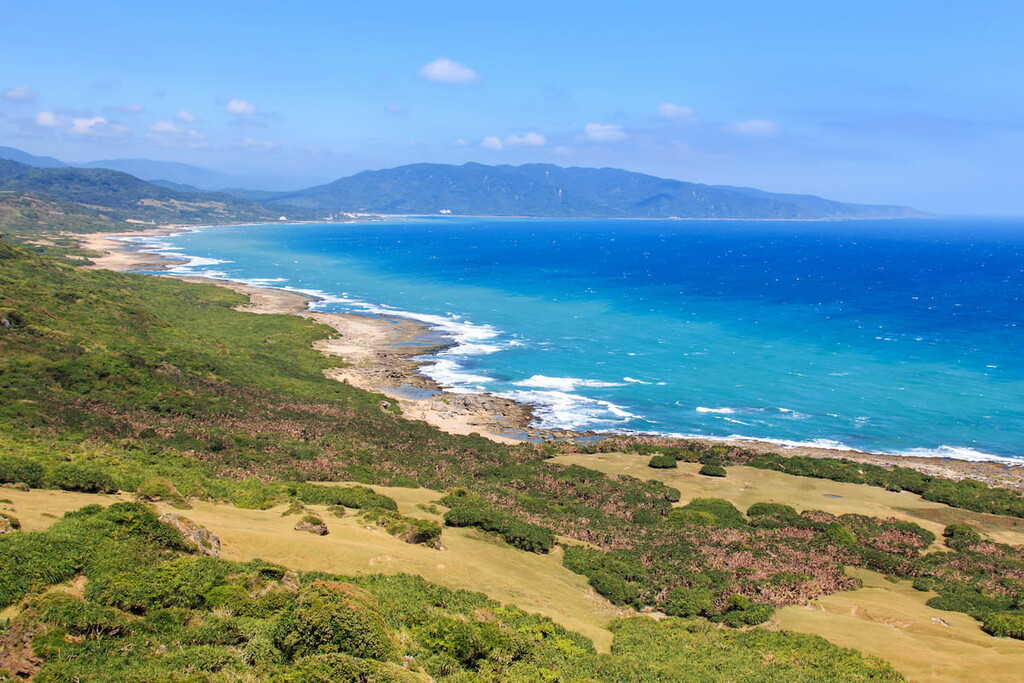
One of the most popular attractions in Kenting National Park is the region’s coral reef. Swirls of reef columns, dripping stalactites and gentle mounds of stalagmites embellish the coral caves, one of which is quite aptly named as the Fairy Cave. Meanwhile, narrow passageways between the hefty limestone rock are firm favourites among many visitors to Kenting National Park.
While Kenting National Park does not contain the massive array of mountains that are more prominent in parks like Yushan National Park and Shei-Pa National Park, the diverse landscape and interesting coral limestone caves mark the intriguing and fascinating scenery of this park.
With a coastline of 70 km (43 mi), Kenting National Park boasts a rich variety of oceanic landforms including coral reefs, sandy beaches, and the perpetually evolving sandstone coast. Due to being exposed to natural forces like wind, rain, and the incoming tides, coral limestone has evolved into caves featuring downward growing icicle-like stalactites and curvy heaps of stalagmites covering the ground.
The stalactites and stalagmites found in the limestone caves have been developed over a process of time by the accumulation of calcium carbonate that drips from coral limestone holding mineral water solution.
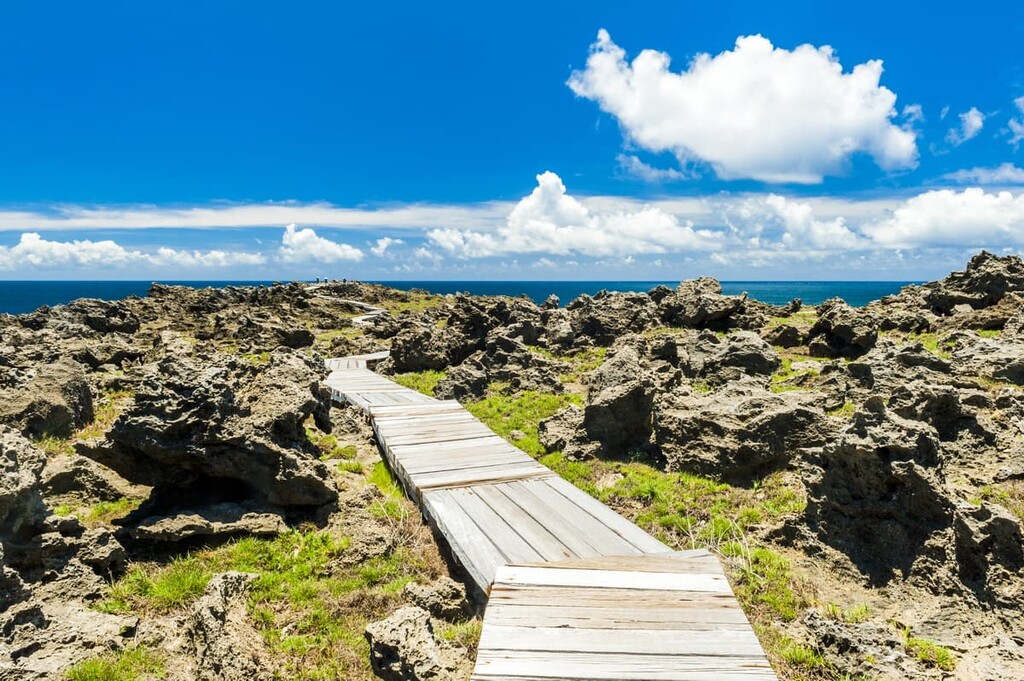
Being located on the coast, the area of Kenting National Park was once totally submerged by seawater around 10 million years ago. Once the waters gradually began to ebb, intriguing coral reefs were uncovered and left behind on the land. Impressively striking coral sea cliffs and oddly shaped rock faces are present along the coast, which have slowly become eroded by the fierce ocean waves.
A fine example of erosion is found on the collapsed cliff terrain located in Maobitou Park. Thousands of years of ocean activity has worn down the rock and transformed the natural scenery of the bay, including huge collapsed coral reefs and sea eroded caves.
Another geological feature of note in Kenting National Park is found at Chuhuo Eternal Flame, which is also referred to as Hengchun Eternal Flame—an ever-burning flame that is fuelled by natural gas that escapes through porous rock. There are cracks in the earth’s mudstone, which ignites to fire when it surfaces. The flames of this natural phenomenon are best viewed at night as the flames dance against the strong winds.
Kenting National Park forms part of an ecological protection area that was established to preserve the coral reefs, marine life, endangered species, and forested areas. Interestingly, it is the only national park in to include both marine and terrestrial areas.
Plants that are present in the park range from a rare coastal forest, a more inland tropical monsoon forest and unyielding coral reef plants.
From the gradual process of receding ocean exposing coral reefs, soil attached to the coral reefs from which special kinds of plants began to grow. Thus, the flora found in Kenting National Park offers a wide and diverse selection of plants inhabiting mountain forested areas and coastal plains.
Kenting National Forest Recreation Area is divided into three distinct habitat zones/layers. The first layer is where the moraceae and lauraceae are dominant, such as banyon and evergreen laurel plants, while in the second layer, bushes and small palmae are mostly present. The third layer is populated with low grasses, chamaephytes and liana.
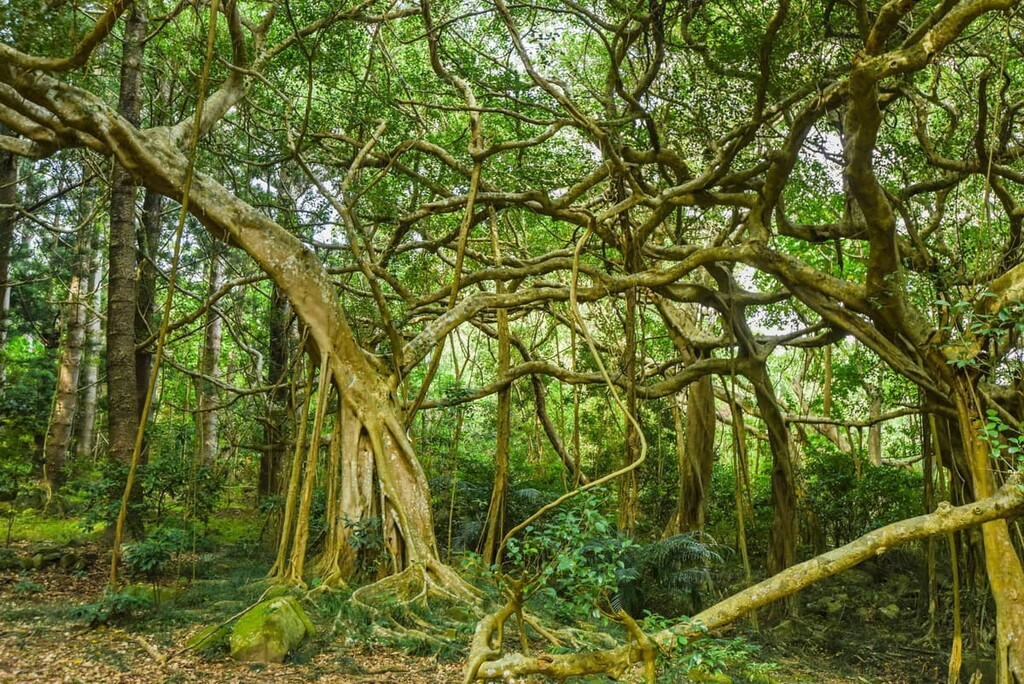
The forest is rich in vegetation as it contains more than 1,200 species of ornamental and conserved plants. Along the forest trails, ancient giant Chinese pistache trees (Pistacia chinensis) form a grand presence.
Kenting National Park also contains the only tropical botanical garden in , and it is one of ten such tropical plant-focused botanical gardens in the world.
While the flora is both rich and diverse, so is the fauna that resides in the park and its waters. Formosan sika deer (Cervus nippon taiouanus), which was once extinct but reintroduced in the park, is one of the 34 species of land mammals found roaming the park’s land.
The highest terrestrial crab diversity in a single area is found in the white sandy beaches of Kenting National Park, of which 26 land crab species are present.
In addition, 216 butterfly species flutter around the park, while 310 species of birds roam the skies, of which 60 species are endangered. Many of the birds found in the park are migratory birds from East Asia, such as the Chinese goshawks, oriental honey-buzzards, cattle egrets, falco subbuteo, and brown shikes.
The strong ocean current contributes to the rich marine ecosystems, including sea birds, sea turtles, bull-sharks, manta rays, whale sharks, and cetaceans. Adding to the diverse marine life, 21 species of freshwater fish inhabit the waters, as do 59 species of amphibians and reptiles.
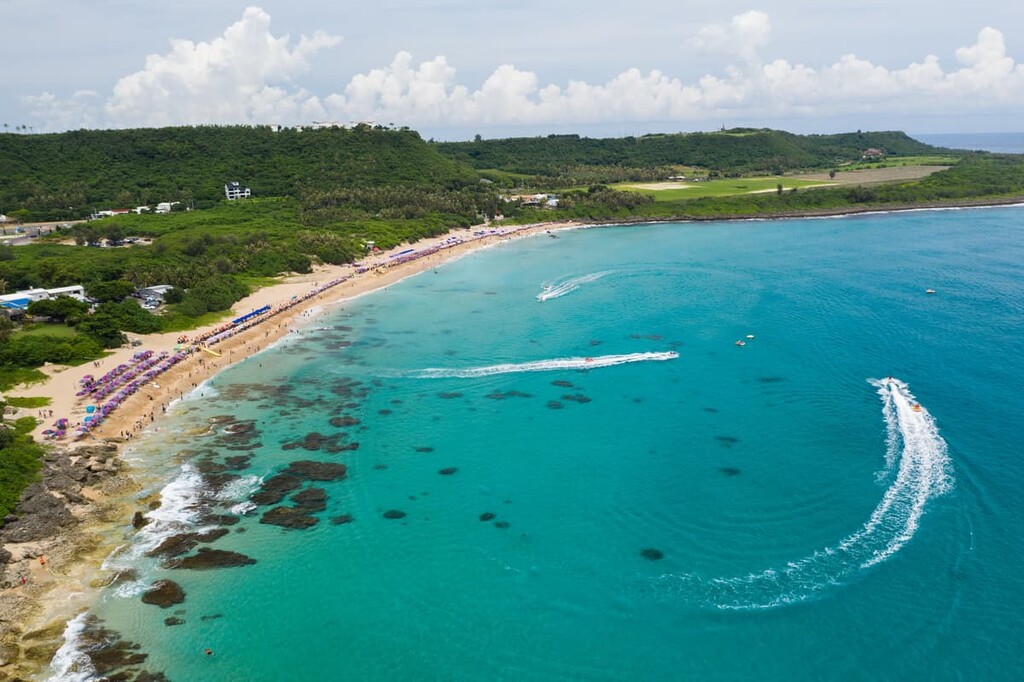
The warm Japan Current (Kuroshio) influences the temperature of the ocean water ranging between a balmy 72°F to 84°F (22°C to 29°C), being both warm and clear due to zero emissions from the river. The underwater coral reef is a magical aquatic world showcasing bright and colourful coral fish, delicate patterned shells, and gently swaying algae.
The waters of Kenting National Park were once a culling ground for whales during the Japanese Occupation Era, which greatly diminished the number of whales in the area. Whales such as the humpback whale, baleen whale, and sperm whale frequented the waters of the park, however today very few whales migrate along the Hengchun Peninsula.
Kenting National Park is ’s oldest national park, having been established on January 1, 1984. The park was established with the primary aim to preserve the natural resources of the area as there was concern that the land was being misappropriated by farmers and potential construction.
The area of Sheding Nature Park (社頂自然公園) was once inhabited by the Paiwan people, who now serve as custodians of the forest due to their wealth of ecological knowledge of the park.
The Kenting and Eluanbi prehistoric sites are among 70 prehistoric sites to be uncovered in the area of Kenting National Park.
Of particular interest is the Eluanbi Lighthouse which was once the source of conflict between the Paiwan people and the Japanese and Americans. During the time of the Qing Dynasty, shipwrecks along the southern Eluanbi Coast became increasingly common due to the strong currents and nearby jagged coral reefs.
Two specific incidents became violent as 54 sailors from the Okinawan Ryukyuan ships and 14 sailors of the American ship Revenge were killed by the Paiwan as retaliation for earlier killings of the Kaolut tribe members by foreigners.
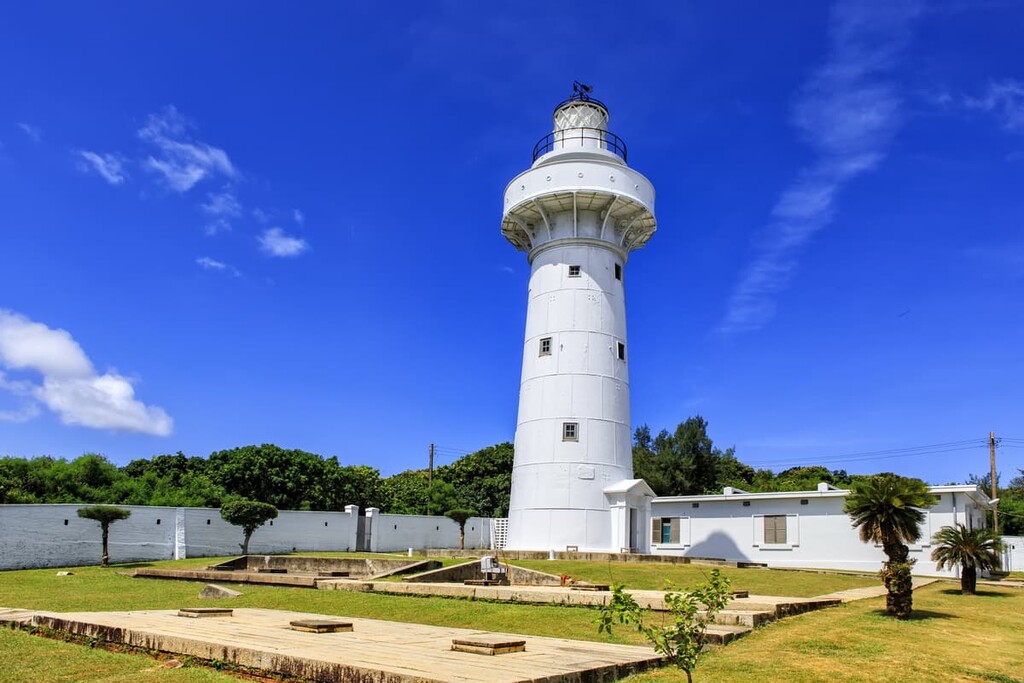
It was these tragic incidents that prompted invasions by Americans and Japanese in 1867 and 1874, respectively. With the Qing Dynasty refusing any responsibility over tribal territory in , this created power opportunities resulting in Japanese and European colonisation of these areas.
Eluanbi Lighthouse was agreed to be constructed by foreign powers as a coastal defence and an aid to avoid shipwrecks, however this was met with great consternation by the Paiwan people. As a result, the lighthouse was armed to protect the building against attack, and thus formed the only fortified lighthouse on the island.
Kenting National Park is the perfect place for any outdoor adventure. These are some of the best hikes and places to check out in the park:
Once an underwater coral ridge, this 150 metre (492 ft) seaside mountain overlooks the low-lying coastal plains of Kenting National Park. It is a short hike to the summit of Guanshan (關山), on which a small temple carved out of coral stone rests, honouring the God of Earth, Tu Di Gong.
On this short hike to the summit, views of the expansive Hengchun Longitudinal Valley Plain are evident in the east, while fish villages views can be located to the north, while the long neck of Wanlitong can be seen stretching to the east of the Strait.
While you may not have heard of Guanshan, chances are you have seen iconic sunset pictures from this mountain, as it has received international recognition for its western views of the aqua Taiwan Strait and scenic Kenting Coastline.
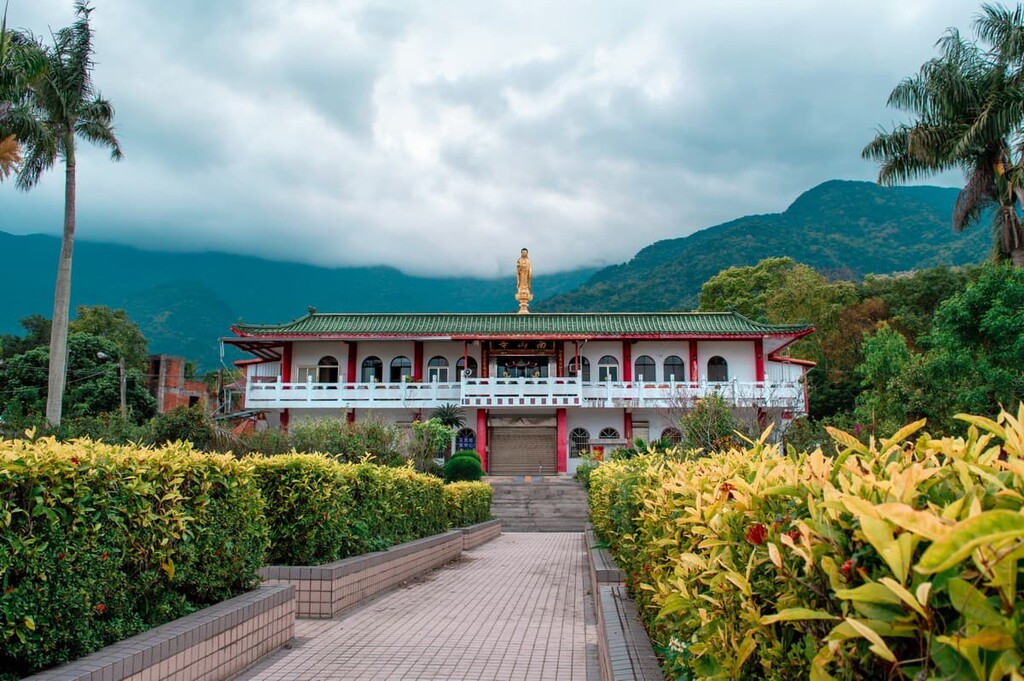
Tortoise Mountain is the English translation for Guishan (龜山) as the extensive, flattened peak resembles a tortoise popping its head out of its shell. Located along the narrow western strip of Kenting National Park, and the first entry point of the park, Guishan overlooks the crystal-clear Taiwan Strait.
From the peak at 81 metres (266 ft), hikers can admire the spectacular sea and mountains views. The half an hour climb to the summit is undemanding and totally worth the glowing sunset views.
This trail can be enjoyed at your own pace as it is a less frequented attraction in Kenting National Park. Clusters of butterflies decorate the trail with their whimsical beauty, and many scenic observations can be viewed along the trail.
Located in the Nanrenshan Ecological Reserve Area, and situated near to the tropical west coast of Kenting National Park, Nanrenhu Trail is a tranquil and peaceful 4 km (2.5 mi) moderately easy trail set around the idyllically serene 28 ha (69 acre) Nanren Lake.
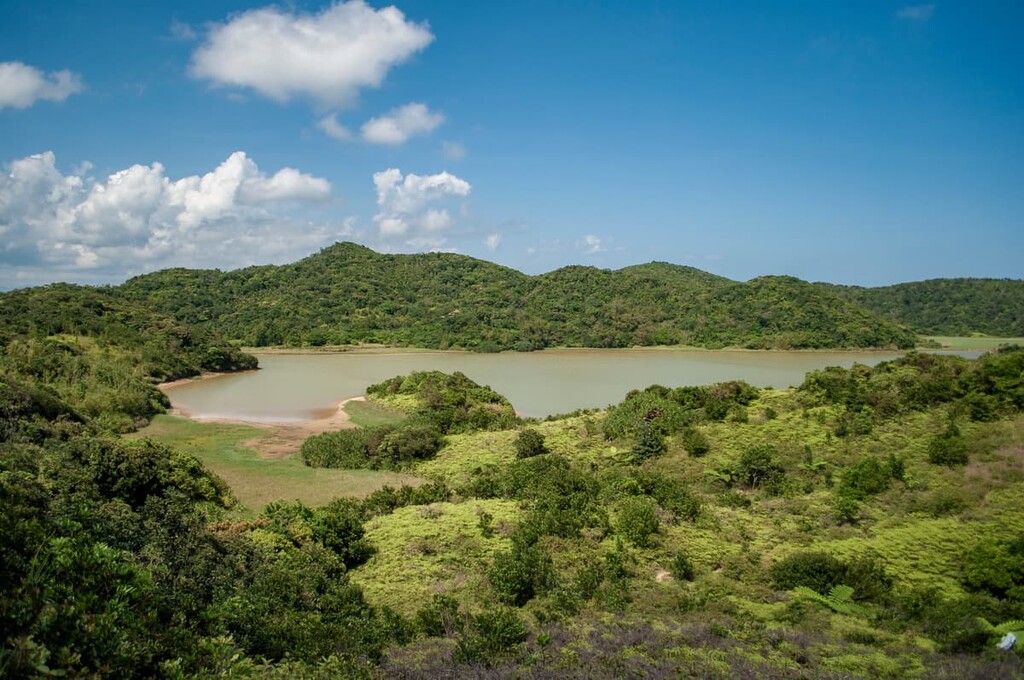
Set amongst a low altitude primeval forest, this trail features a flurry of butterflies and the crystalised wings of dragonflies against the soundtrack of a chorus of chirping birds and singing cicadas jumping amongst plants. The scenic beauty of this evergreen overgrown trail is populated with fern plants wedged between the lofty abundant broadleaf forest.
As the region of Nanrenshan Ecological Reserve Area forms part of a preserved area, visitors need to gain permission to enter and embark on the charming forested trail. Entry is restricted to 400 people per day.
One of the most picturesque areas of Kenting National Park, this botanical forested garden packs a delightful punch for nature enthusiasts. Warped, mangled upward roots combined with the drapery of hanging branches of the banyan tree sets a mystical atmosphere along the path of Kenting National Forest Recreation Area (墾丁國家森林遊樂區).
Punctured pockets of jagged, dotted coral caves are an interesting feature of this area, especially One Line Sky (一線天). The thin blue strip of sky shining above the top of the cave’s rift demonstrates how the force of earthquake activity split the cave in half.
The sharp, pointy stalactite Fairy Cave is suitably named, as ribbons of flowing shafts suspend from the ceiling, creating a spooky, yet enchanting environment, while wavy rock and layers of stone line the stalagmite ground.

A 27-metre-high (89 ft) observation tower sits in the southern section of the park, offering incredible views of the Pacific Ocean and Strait of , and it is possible to see the far away Orchid Island in the horizon.
More than 1,000 plant species belong in this forest, and the plants are separated in areas for medicinal plants, tropical fruits, and rubber trees. A total of 17 scenic points are dotted along this forested path, allowing visitors to savour the extraordinary scenery on display.
A haven for ecotourists and geological enthusiasts, Sheding Nature Park (社頂自然公園) houses the conservation of the once extinct Formosan sika deer, located on the eastern section of the park.
Due to the rich natural resources found in this park, like glowing mushrooms and a variety of tree frogs and land crabs, the Paiwan people have organised guided tours to educate visitors on the ecological aspects of this park, as it is their ancestral homeland.
The striking natural beauty of this park is like no other. Strange looking trees populate the open grasslands, the peculiarity of their appearance showing in the absence of lower branches and leaves from the forceful north-easterly wind, with only the upper canopy of foliage remaining intact.
The paths lead from wide open spaces to a forested area to where coral caves populate the paths, offering ethereal wonders as visitors amble through the thin alleyways separating the limestone caves.
Located in the west coast of Kenting National Park, this sea facing park got its name from the shape of the eroded rock which looks like a cat ready to pounce. The whole area of Maobitou Park (貓鼻頭公園) experiences both windward and powerful sea erosion, thus creating unusual shapes of rock protruding from the rough terrain.
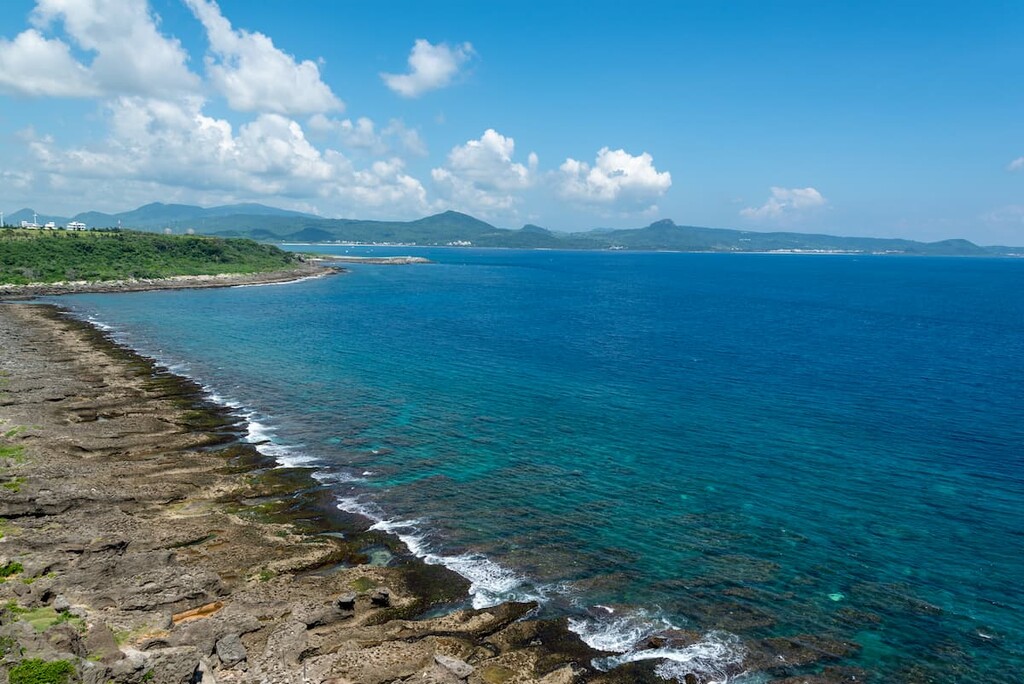
The extensive views from the observation of Maobitou Park are said to be the most exceptional. The sunny blue skies and aqua coloured water of the Bashi Channel on the left and the Taiwan Strait to the right boundlessly stretches across the coast.
The northern green mounds of SanTai Shan (三台山), Da Shan Mu Shan (大山母山), and Men Ma Luo Shan (門馬羅山) peek up in the distance, while the dense thicket of Kenting National Forest Recreation Area and the southernmost tip of Eluanbi Lighthouse are both viewed from the observation deck.
The mild current of the Kuroshio maintains warm water temperature, allowing suitable breeding conditions for marine creatures. Winter is the breeding season for seaweed, and in these temperate waters ulva, red alga, and sargassum are among some of the seaweed that can be viewed in the clear coastal waters.
Also known as Sail Rock as its appearance resembles a ship’s mighty sail, this huge chunk of coral steadily standing in the sea just a few metres from the shore, is a famous natural landmark in Kenting National Park.
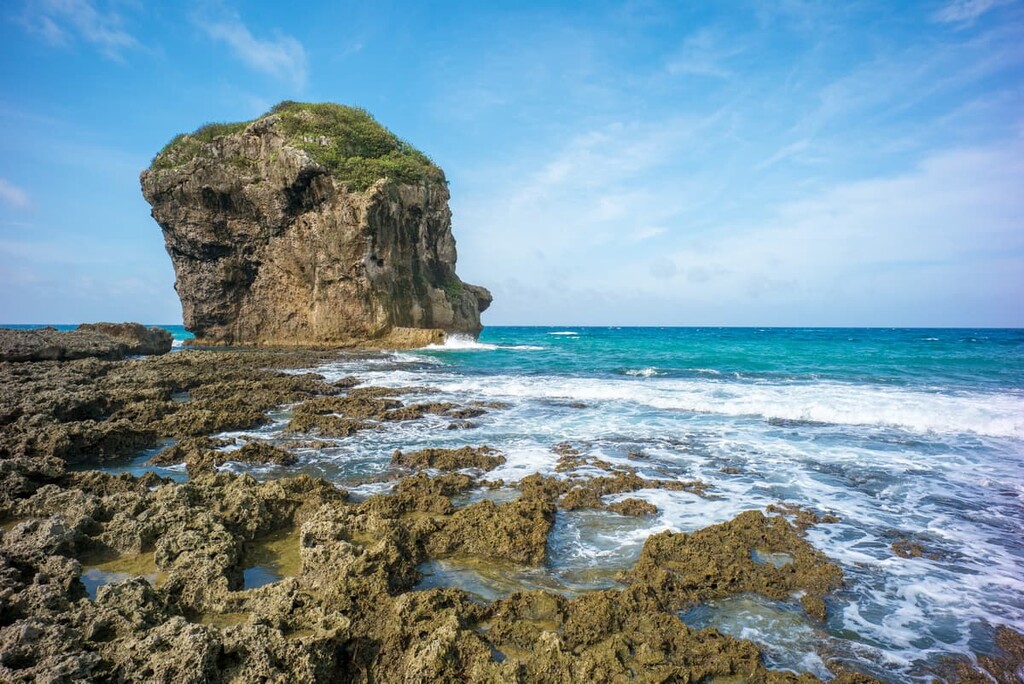
Once part of a nearby coastal cliff, this large coral slab has gradually severed from the land due to the forceful impact of the raging stormy seas during monsoon and typhoon season. Testimony to the solid strength of the rock, while the seas have flattened the land behind the coral rock, Chuanfanshih (船帆石) stubbornly relents to the erosion standing solo from the ocean floor.
To get a closer look at the rock, there are steps leading onto the rocky, stony shore, however the sharp and uneven rocks can be very slippery when wet.
Located in Kenting National Forest Recreation Area, the dominant mountain of Dajianshan (大尖山) is composed of sandstone and shale gravel blocks, and it stands at 318 metres (1,043 ft). Passing through the entrance gates of Kenting National Forest Recreation Area, one makes their way towards the nearby mountain through open fields.
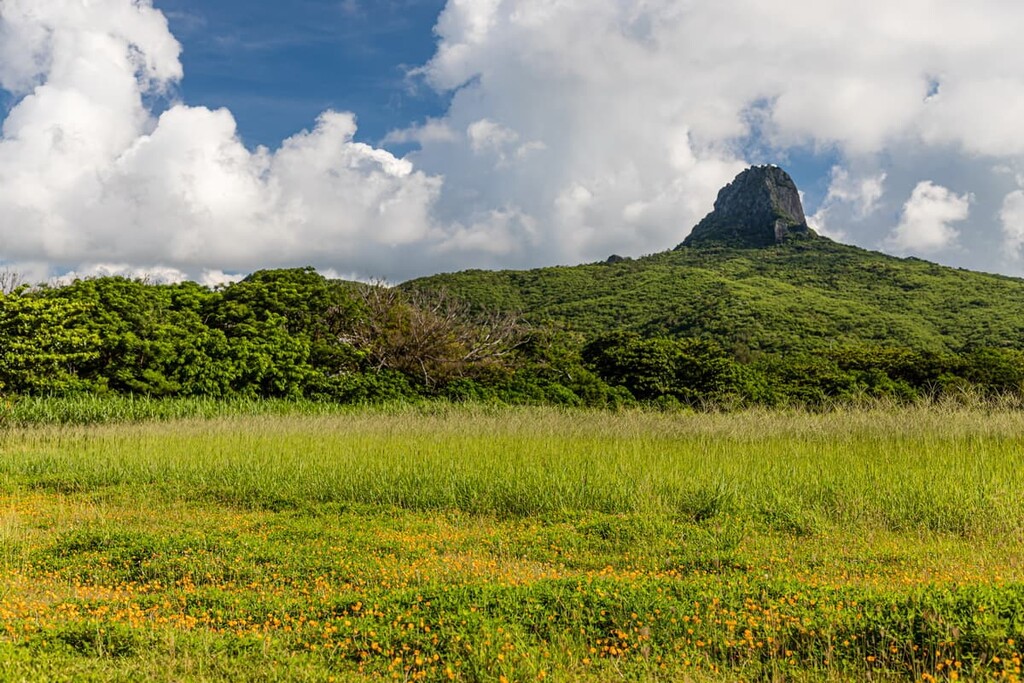
There are two options to summit this mountain. From the east side, located on the side of Kenting open grasslands, it is a 1.5 hour journey to the summit, while a 2 hour journey follows from the west side. Both journeys are fairly easy, and there are climbing ropes along the ridge for assistance.
The summit overlooks the entire Hengchun Peninsula showing the open seas in the south, and the more mountainous topography of the north.
A firm favourite for beachgoers, Baisha Beach (白砂灣) is a white sand beach stretching its sandy shell and coral covered shores by 400 metres (1,312 ft). With warm clear blue waters, stark white sand, together with the typically sunny Kenting skies, this beach is a great spot to relax, listen to the crashing of the foaming waves, and take in the gorgeous beauty of the bay.
Beach revellers are spoiled with choices in , as nearby beaches of Nanwan (南湾), Dawan (大湾), and Xiaowan (小湾) are equally charming and a perfect spot to unwind.
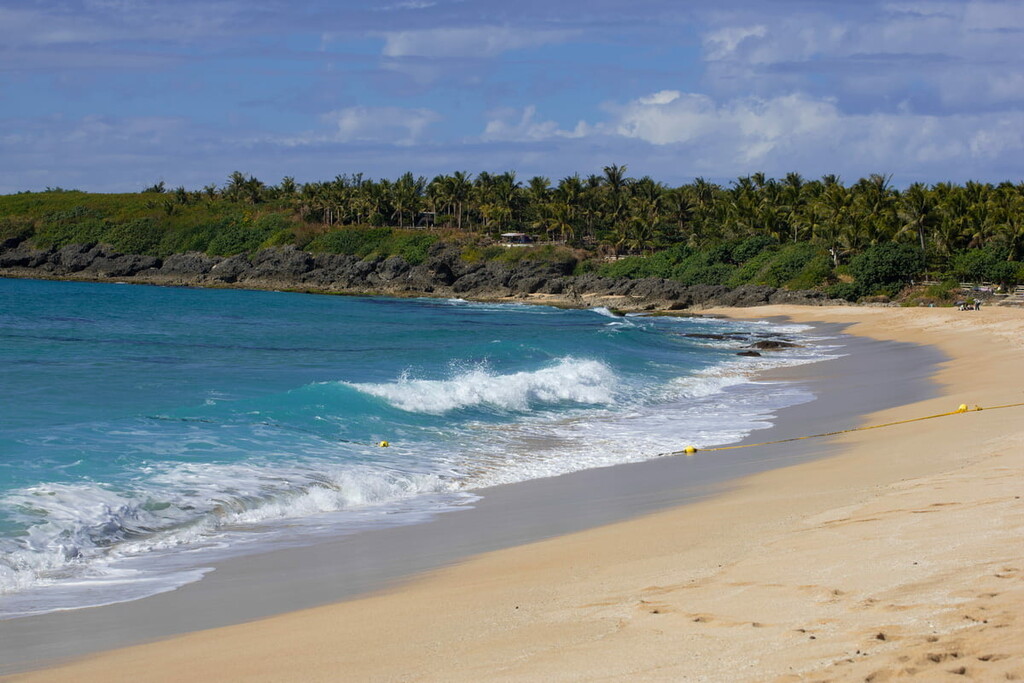
Looking for a place to stay in Kenting National Park? Here are some of the best cities and towns to check out:
The tranquil yet vibrant township of Kenting (墾丁) is a perfect place to stay and is located close to nearby attractions like the Kenting National Forest Recreation Area, Xiaowan Beach, Dawan Beach, and Kenting Beach.
For upscale luxury, the Gloria Manor provides peaceful scenic views and houses an excellent fitness centre offering classes to visitors. Other features include an outdoor pool, bar and restaurant, a tranquil outdoor garden, and a free shuttle service for guests wishing to explore the area.
The mid-range Bai Sha Tan Cottage hotel is conveniently located on lively Kenting Road. Pulsating neon lights are an electrifying sight to witness at night time when strolling down the road at night. This hotel provides a wealth of organised activities like windsurfing, diving, canoeing, fishing, and also horse riding. The nearby Xiaowan beach is only a few minutes walk away from the hotel.
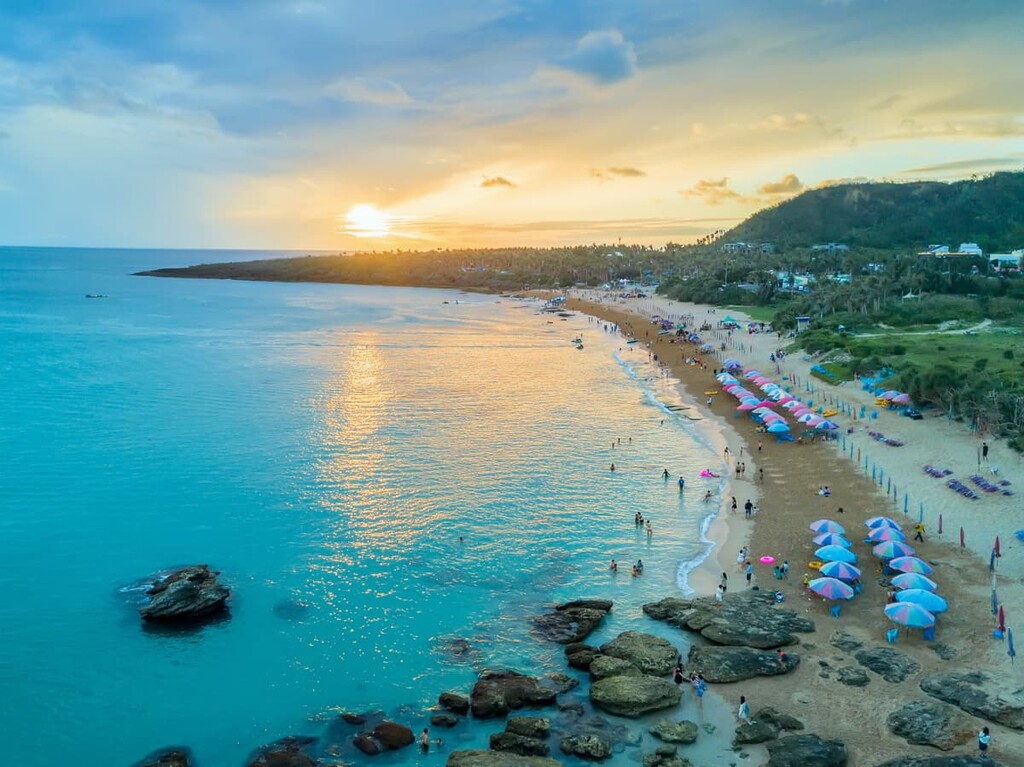
Budget accommodation can be found at the highly rated My Home Hostel, also located on Kenting Road. Capsule rooms for singles and doubles, a restaurant and bar, as well as a free breakfast is what is on offer at this clean and quirky decorated hostel.
While the nearby beaches may be a drawcard for people wanting to stay in Kenting, Hengchun (恆春) is the main town in Kenting National Park and the ancient city gates are in pristine condition, as they have been excellently well preserved and command a powerful presence.
The elegantly modern FFF Hotel is situated near the old South Gate and is situated 730 metres (2,395 ft) from Hengchun Bus Station. Other nearby attractions a short walk away are the West Gate, East Gate, and the North Gate, as well as the Chuhuo Special Scenic Area. Facilities include a sun terrace, a restaurant, and an outside play area for families with little children.
Altrove House Hostel houses a charming antique collection as well as a rooftop terrace where stunning scenic views can be seen. Guests have loved the relaxing atmosphere of the hostel, and the presence of house cats to keep guests company.
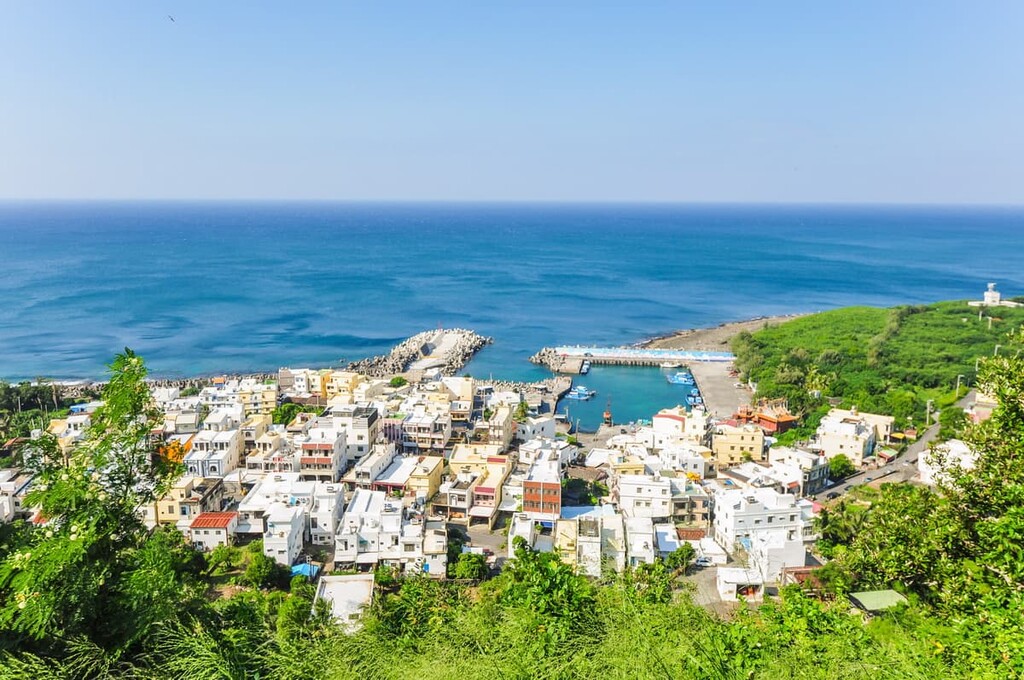
If you are coming from the major cities of Taipei, Hsinchu, Taichung, Chiayi or Tainan, hop on the Taiwan High Speed Rail (HSR) to Kaohsiung Zuoying HSR Station. Alternatively, you can take the express train from any of the train stations in the major cities to Kaohsiung Main Station.
The Kenting Express Bus departs every 15 minutes from both the bus stations outside Kaohsiung Zuoying HSR Station and Kaohsiung Main Station. You need to remember to buy a return ticket for the Kenting Express Bus when purchasing bus tickets.
The 9117 and 9188 bus both depart from Zhongshan Bus Station outside Kaohsiung Main Station, offering another option to get to Kenting National Park and heading all the way south to Eluanbi.
You could also rent a car or scooter from Kaohsiung to make your way to Kenting National Park. The distance between these two places is 107 km (66 mi) and the drive takes around one hour and forty five minutes.

Explore Kenting National Park with the PeakVisor 3D Map and identify its summits.








